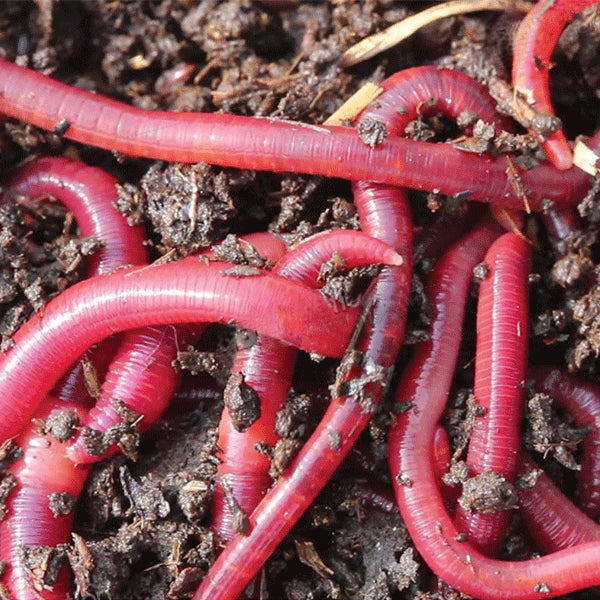Reliable red worms: Make composting easy
Wiki Article
Why Red Wigglers Are the Best Selection for Your Composting Requirements
Red wigglers have emerged as an exceptional selection for composting due to their remarkable capability to efficiently disintegrate natural matter while creating high-grade worm spreadings. The journey to effective vermicomposting includes even more than just getting these worms, and recognizing the perfect conditions and false impressions surrounding them is critical for maximizing their potential.Benefits of Red Wigglers

Red wigglers prosper in a range of conditions, making them adaptable to different composting arrangements, from little bins to bigger systems. They master vermicomposting, where their activity creates a high-grade output recognized as worm spreadings, abundant in valuable bacteria and nutrients essential for plant development. This all-natural plant food promotes soil health and wellness, enhances dampness retention, and boosts plant durability against bugs and diseases.
Moreover, employing red wigglers can significantly decrease methane exhausts related to land fill waste, adding to environmental sustainability. Their simplicity of care and minimal upkeep needs make them ideal for both newbie and skilled composters. Eventually, incorporating red wigglers right into your composting method not only cultivates efficient waste administration but additionally boosts the high quality of your garden compost.
Suitable Composting Conditions
Producing optimal composting problems is essential for optimizing the effectiveness of red wigglers in damaging down organic issue. These worms grow in a regulated setting that simulates their all-natural habitat, which mainly contains wet, dark, and well-aerated rooms. To attain this, maintaining a temperature range of 55 ° F to 77 ° F is vital, as severe temperatures can prevent their activity and even cause death.(red wiggler farming)Moisture levels should additionally be carefully kept an eye on; red wigglers need a wet setting, ideally around 70% dampness material. Way too much dampness can lead to anaerobic problems, while insufficient moisture can cause dehydration. In addition, a balanced carbon-to-nitrogen proportion, preferably around 25:1 to 30:1, supports ideal digestion and nutrient biking.
Furthermore, the composting tool need to be maintained loosened and aerated, enabling for proper airflow. This not just profits the worms but additionally aids in the break down of natural materials. By guaranteeing these excellent conditions, composters can create a growing ecological community that improves the performance of red wigglers, ultimately causing abundant, nutrient-dense garden compost.
How to Start Vermicomposting
Starting vermicomposting is a simple procedure that can yield significant advantages for both your garden and the environment. To begin, select an ideal container, such as a plastic container or a wood box, guaranteeing it has air flow holes for airflow. A dimension of roughly 15 to 20 gallons is ideal for small-scale procedures.Next, prepare the bedding product, which should be a check it out blend of shredded paper, cardboard, and coconut coir. This bedding offers a comfortable habitat for the worms while retaining wetness. Go for a bed linens deepness of about 4 to 6 inches.
Once the bedding is ready, present red wigglers right into the container. A population of around 1,000 worms is adequate for processing cooking area scraps properly. After adding the worms, include a balanced mix of environment-friendly materials, such as vegetables and fruit scraps, along with brown products, like dried out fallen leaves.

Nutrient-Rich Castings
(red wiggler worms)The red wigglers in your vermicomposting system play a vital duty in creating nutrient-rich castings, a highly in-demand natural plant food. These castings, usually described as worm humus, are the result of the worms absorbing raw material and secreting it in a type that is unbelievably helpful for plants.Rich in essential nutrients such as nitrogen, phosphorus, and potassium, worm spreadings supply a balanced source of fertility that improves soil framework and advertises healthy and balanced plant development. Additionally, they consist of useful microorganisms that further enhance soil health, aiding in nutrient absorption and condition resistance.
The slow-release nature of worm spreadings guarantees that nutrients are offered to plants over an extended duration, reducing the threat of nutrient leaching and therefore contributing to lasting gardening techniques. Unlike artificial plant foods, which can cause soil destruction with time, worm spreadings improve the dirt's physical, chemical, and biological buildings.
Therefore, integrating red wigglers into your composting initiatives not only alleviates waste yet additionally generates a costs organic change that dramatically profits gardens, landscapes, and potted plants alike. - red wigglers
Common Misconceptions Regarding Worms
While several individuals identify the benefits of utilizing worms in composting, several false impressions persist concerning their biology and behavior. One usual myth is that all worms are equally efficient for composting, when actually, only particular species, like red wigglers, thrive in organic waste atmospheres. These worms are especially adapted to composting, making them suitable for this function.An additional misunderstanding is that worms are delicate and need excessively certain problems to survive. Actually, red wigglers are fairly durable, able to endure a series of temperature levels and dampness levels, provided they are maintained within an appropriate variety.
Additionally, some believe that worms take in all kinds of food waste indiscriminately. However, red wigglers prefer certain organic materials, such as vegetables and fruit scraps, and can have problem with meat, dairy products, and oily foods, which can create odors and attract pests.
Final Thought
Finally, red wigglers represent an ideal choice for composting due to their quick disintegration capacities and adaptability to different atmospheres. The nutrient-rich spreadings produced substantially boost dirt wellness, advertising sustainable gardening techniques. Comprehending the perfect conditions for vermicomposting and addressing common false impressions about these worms additionally strengthens their duty in reliable waste management. red wigglers. By leveraging the benefits of red wigglers, people and communities can add to a more lasting and eco pleasant strategy to organic garbage disposal.Report this wiki page